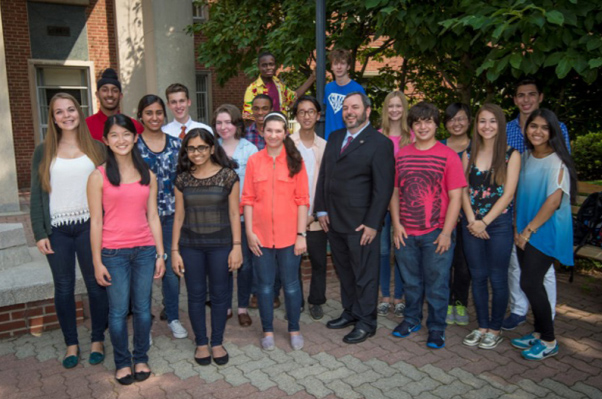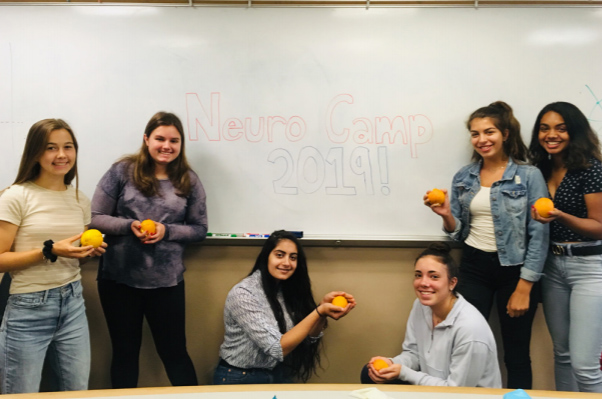Nurturing Future Neuroscientists
Summer of 2019 marked the 7th Annual Neuroscience High School Summer Camp, a two-week immersive science experience that is offered through the Department of Neurobiology and Anatomy in collaboration with the Graduate School of Biomedical Sciences and Professional Studies. It was founded and is led by Dr. Jed Shumsky along with newly appointed co-director Dr. Michael Lane. With just a handful of other neuroscience-related experiences for high school students across the country, Drexel’s Neuroscience Camp plays a critical role in nurturing future neuroscientists by providing hands-on opportunities to explore the brain and biomedical research during an important developmental period.
Following is a message from Jed Shumsky, PhD, Founder and Director of the Neuroscience High School Summer Camp and Professor of Neurobiology and Anatomy

The Neuroscience Camp is my favorite thing that I do all year! The real purpose of the camp is to expose young students to what scientific research actually is. We demonstrate that science is not so mysterious and the students can actually think of themselves doing it. One benefit of working with high-school students is that they are unjaded by the college experience, so everything provides a sense of wonder for them. They truly cannot learn enough about it, asking question after question, and as an educator, that is an incredibly rewarding experience.
We receive about 45 applicants a year and take as many students as we can. The camp runs daily from 10 a.m. to 4 p.m., with the first half of the day being a lecture component either by faculty or senior graduate students, and the second half comprised of lab technique demonstrations. The first week is more demonstration and clinical case application. The second week involves a group project overseen by a graduate student who helps the student write up the project as a PowerPoint presentation, which they then present to the faculty. We also take the students on field trips to both the brain exhibit at the Franklin Institute and the Academy of Natural Sciences. At the Academy, lead paleontologist Dr. Ted Daeschler shares his knowledge and experience on archeological digs and takes the students on a behind-the-scenes tour of special collections.
One of the ways that the camp runs well is because it’s an opportunity for our neuroscience graduate students to obtain additional teaching experience. In my role as course director for the teaching practicum, I am happy and able to provide course credit for helping with camp. The Neuroscience Camp offers three different teaching experiences to our grad students: 1) give a lecture, 2) run a demonstration which involves an afternoon where they show a lab technique, explain it to the students, and then repeat it a second or third time depending on how many groups of students we have going through, or 3) lead the week-long research component (worth more credit of course!).

At the end of camp, we confer students a certificate at a graduation ceremony where the parents are invited. The last thing we do is go around and ask everyone, "What are you taking away from this?" The students tell me all kinds of things like, “This is what I thought college would be like” or “I met a whole group of like-minded people, I thought I was the only one at my school.”
We also invite the students to come back for Discovery Day and each year we have a few students who come. They’re a little overwhelmed, but they really love it. Again, this is about showing them the spark of what science is really like. One year, a graduate student who led a group project gave a platform talk. Several high-school students who had been a part of that group project were there and they all stood up and applauded at the end, and it was awesome.
Originally appeared in The Hillock Newsletter, produced by the Department of Neurobiology and Anatomy.
Back to Top